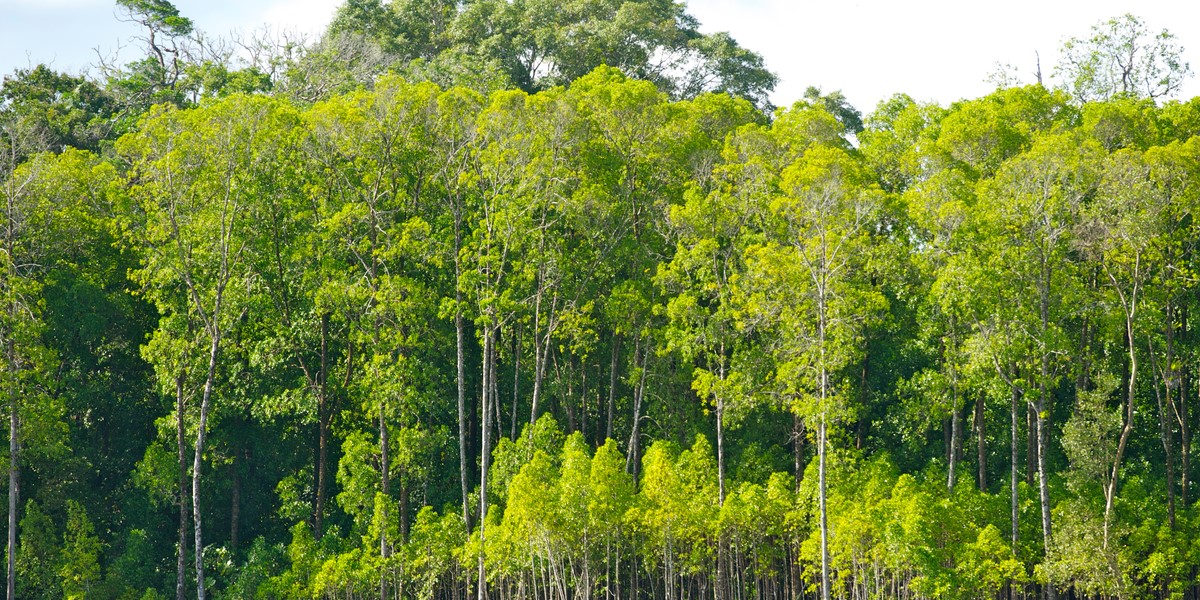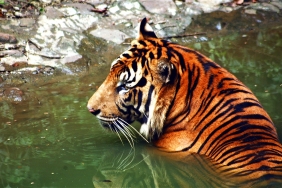UJUNG KULON, A PARADISE ON THE WESTERN TIP OF JAVA ISLAND
By: Natalia T. Agnika and Ciptanti Putri
Most people only know Ujung Kulon as a protected area for Javan Rhino (Rhinoceros sondaicus) conservation. In fact, this area located at the western tip of Java Island holds a variety of biodiversity that includes terrestrial, marine and coastal ecosystems. In fact, since 1991 UNESCO has designated Ujung Kulon National Park as a world natural heritage site.
Ujung Kulon National Park covers 122,956 hectares and is home to a number of protected species, such as the Javan gibbon (Hylobates moloch), surili (Presbytis aigula), and coyote (Cuon alpinus javanicus). A variety of unique biodiversity also call Ujung Kulon home. Forest honey (odenk), various species of songbirds, ornamental corals, ornamental fish, lobster shrimp, rattan bamboo, turtles, monkeys, and banteng are examples of the unique biodiversity also explored by the people there.
The beautiful natural charm and unique flora and fauna make this area like a "paradise" that attracts tourists to visit. Call it Peucang Island. Once you set foot on the island, tourists will be greeted with soft white sand surrounded by clear bluish-green sea water. Wild boars and monkeys inhabiting the island do not hesitate to greet visitors who come. Other tourism potentials are the bull grazing field at Cidaon, hot springs at Mount Honje, turtle landing at Ciramea, canoeing at Cigenter, and surfing locations at Palm Point on Panaitan Island.
No less beautiful is the underwater ecosystem in Ujung Kulon. Various types of coral reefs along with ornamental fish and reef fish can be found there. On Peucang Island, precisely at Karang Careh, there is a towering rock at a depth of 15-18 meters. There are grouper, yellow tail, surgeon fish, lobster, soft coral garden, nudibranch, hawksbill turtle, cuttlefish, blue spotted stingray, lion fish, clown fish, cake fish, puffer fish, snapper, seafan, shrimp, and moray. At Badul Island Marine Park, hawksbill turtles lay their eggs here from July-August. Several other areas in Ujung Kulon also have underwater tourism potential, such as Karang Copong on Peucang Island, Legon Lentah on Panaitan Island, Oar Island, and Paniis Beach.
This paradise on the western tip of Java Island is a very valuable treasure. Unfortunately, the current condition of the underwater ecosystem has decreased and damaged. Like two sides of a coin, the abundant and beautiful underwater natural resources clearly have economic value. However, on the contrary, it has a negative impact on the environment if it is not maintained. For example, a group of fishermen from another region caught fish and other marine life using bombs, potassium, and genjring nets. Such methods can damage coral reefs. Coral reefs are the home and breeding ground for fish and other marine life. Another threat that is no less dangerous is the waste from shrimp farming practices, which causes the surrounding waters to become murky.
Realizing the adverse effects of various human activities that are increasing in the Ujung Kulon area, WWF-Indonesia Ujung Kulon Program has made various strategies in an effort to preserve nature there. One of them is to develop alternative sources of livelihood through ecotourism activities. Another is coral reef transplantation, in collaboration with tour operators. A coral reef conservation program called "Revive the Reef" was initiated by WWF-Indonesia a while ago. This conservation program involves corporations and local communities in an effort to restore critical coral reef areas. "Revive the Reef" allows the active participation of corporations and communities to care about the management of marine natural resources by taking action in the process of coral reef transplantation as an important habitat for marine biota.





